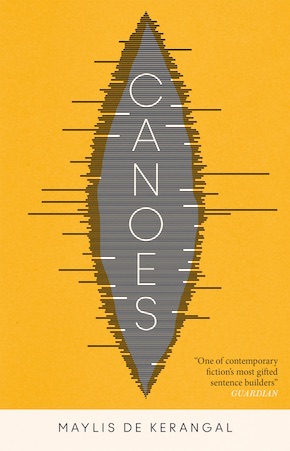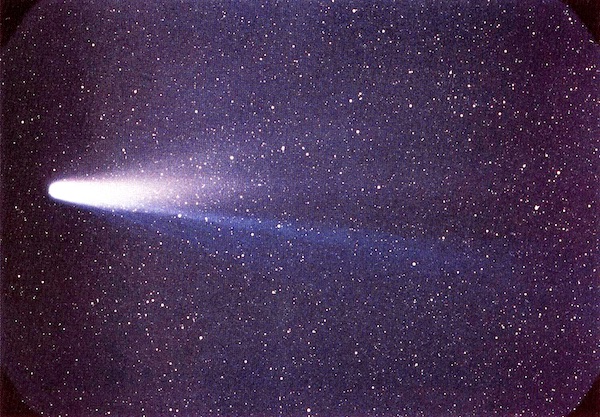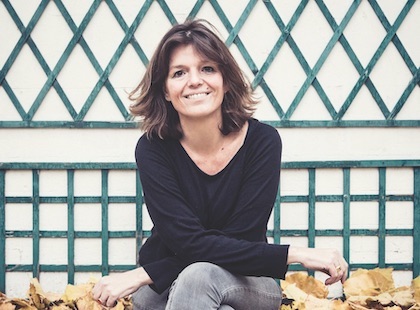Arianespace
by Maylis de Kerangal
IT’S THE LAST ONE IN THE VILLAGE. RUMOUR HAS IT she’s outlived most and chased away the rest, that’s how they talk about her in these parts, where her first name is all that’s needed: Ariane. According to the police report, she is ninety-two years old, and what I hope, as I park my car at the end of the path, is that her memory will still be accessible and that she’ll have the desire to tell – but then those who talk too easily, and pull out stories like rabbits from a hat, are not always the most credible witnesses, as we all know from experience.
I like arriving at people’s houses on foot, like a neighbour, or someone familiar enough to show up unexpectedly, just passing by. Before knocking, I look around a little, take the measure of the place, note the perspectives, the blind spots and vanishing lines, locate the landmarks. The only road in the village, with its central grassy crest between two black mud furrows, slopes gently upward between abandoned buildings, chaos of fallen-in roofs and walls, cluttered in sections with heavy rubble and solitary stones. I tried as I walked to take note here and there of a door, a window, an intact façade so as to reconstitute their layout, their size, and imagine them approximately. These ruins, which had once been human habitations, were now thick with lichen and moss, overrun by bindweed and nettles, and emitted a low continuous vibration which I confused with silence. Surprised, I imagined the mice and garter snakes that scurried or darted behind me, while the ants and worms returned to their manufacturing deep within underground galleries. The air was acidic, the weather heavy, the sky white; something powdery floated in the atmosphere. Ariane’s house, which I had located on a satellite map, towered over this rubble.
At the sound of the buzzer, I entered a small cement courtyard lined with seedlings in pots, a white plastic chair, and a broom. I waited, bending my knees to peer through the window in the door. Ariane came up behind me, a fluorescent-pink basin in her arms, her voice low and clear: are you looking for me? I let out a little shriek and whipped around like a kid caught in the act. With a disproportionate hand covered in brown spots, she pushed away my investigator’s card from TFSNAP (Task Force for the Study of Non-identified Aerospace Phenomena), and I followed her into the kitchen – coded mayhem, remains of human life – and the next minute we were sitting down to a café au lait, served in large grooved bowls. I took out a notebook, the form, and a pen, and then, once Ariane’s civil status was established, I asked her to tell me what she’d seen the night of the twenty-first to the twenty-second of June. I was surprised to see her get up to fetch a pack of fags and become a completely different person with a cigarette in her mouth.
I had imagined her small and wizened, the wrinkled skin of an old fig, hair sparse, body brittle and slow, an apron tied around her waist and black peasant stockings, but she was something else: a tall, regal woman in jeans, a red T-shirt, and boots, and she was thin, long grey plait over her shoulder, cheekbones still high, and beneath ragged eyelids, eyes of a deep black – the kind of black that absorbs nearly all visible light, and which is found in bird of paradise feathers or on the belly of peacock spiders; altogether wizened, dry, and flaking, but conveying a great impression of physical strength and brutality.
I blurted out the criteria for good camouflage which I’d learned in the army: shape, shadow, movement, brightness, colours? Her eyes moved to meet mine, and I blinked to escape them: I know what I saw.”
I asked her to describe her sighting, just that: what did it look like? She finished her cigarette in silence. I couldn’t take my eyes off the hard veins taut as electric cables under her skin. I thought she was trying to find a way to begin, and to help her, I blurted out the criteria for good camouflage which I’d learned in the army: shape, shadow, movement, brightness, colours? Her eyes moved to meet mine, and I blinked to escape them. She blew smoke towards the ceiling: I know what I saw.
That night, the night of the summer solstice, when she’d opened the window in her room to draw closed the outside shutters, a luminous shape was gliding slowly over the abandoned rooftops, red underneath – like the ring on the gas cooker, she said, gesturing to the stove with her chin – with a bunch of green spots on top. It was flying low, without a sound. The stars weren’t out yet and its shape was clearly outlined, a flattened cone shape, or that of a turtle, the shape of a flying saucer. I asked to see the window. She went ahead of me into a plain room, wooden floors and whitewashed walls, and I noticed above her narrow bed a model of the ocean liner SS France placed on a shelf beside a Grundig transistor radio. Seen from above, the village was thick with brambles, folded in on itself beneath time, and the view did indeed include a large stretch of sky. Ariane added, calm, it was very beautiful, you know, those red and green lights. It made me think of the lights of New York. From what I had learned about her, Ariane had spent her whole life within a thirty-kilometre radius of this place.

The complexity of human testimony strikes me even more, now, than the observed facts themselves. Now, my penchant for the faraway absolute has been erased in favour of a leaning towards the nearby, and I envision these stories of sightings, these prosaic and fragile little narratives collected for over twenty years from all across the country, as the true substance of cosmic wonder. The emotions that are wrapped up in them – from a rush of excitement or panicked fear to unbridled megalomania – the entanglement of dreams and lived memories, the blending of time frames, the summary interpretation charts, the hasty deductions, the optical and autokinetic illusions, the cases of retinal persistence, the errors of estimation of distance, the choice of vocabulary, the beliefs, the metaphysical fibre of the witness, all of this captivates me as much as the UFOs themselves. But I joined TFSNAP because of my passion for ufology, and probably also because in March 1986 I had missed the passage of Halley’s comet – I was fifteen, I kept watch every night from the window of my room, not realising it was parading through the southern hemisphere, in fact; I would imagine it coming into my room at the speed of light and dragging along the entire cosmos in its wake, black holes, galaxies, planets, and possible lives, and then I would integrate the very movement of the universe, take my place in it, and the next day my heart beats impossibly hard when I see the photos of the comet taken by the Giotto probe, its dazzling nucleus in the shape of a peanut or a canoe, its halo of spume, its powdery trace.
Come with me, I want to show you something. I followed Ariane out back behind the house, and we started up the path on the hill – she was walking fast, her jeans billowing around her bony legs, and breathing hard, as though she were hollow. At the top was a grassy field, and after a minute or two, she stepped away so I could see a circular mark about seven metres in diameter, stamped with six holes – the legs of the craft, is all she said. The grass was burned on top, but this wasn’t from a fire, it was something else. An undefinable odour emanated from it, something like sulphur and metal powder. The circle was so perfect it could have been drawn with a compass on the ground. I had never seen this, such a clear trace. This is where they landed. Ariane raised her eyes towards me, matte, aniline, and this time I didn’t look away. She went on, very distinctly: they contacted me. I thought of TFSNAP – a testimony was only kept if its consistency was judged to be superior to its strangeness, two fundamental notions, and so I took dozens of photos, kneeling in the grass, and gathered all sorts of samples. And then, putting away my equipment, I asked Ariane if she was the only one to have seen what she had seen. She was smoking again, eyes far off, and she shrugged. They’re coming back tonight, do you want to wait for them with me? My eyes went back and forth between her extraordinary face and the mark on the ground. The consistency and the strangeness. I said yes.
From the collection Canoes, translated by Jessica Moore (MacLehose Press, £14.99)
—

Maylis de Kerangal spent her childhood in Le Havre and now lives in Paris. Her novel Birth of a Bridge was the winner of the Prix Franz Hessel and Prix Médicis in 2010. In 2014, her fifth novel, Mend the Living, was published to wide acclaim in France, winning the Grand Prix RTL-Lire award and the student choice novel of the year from France Culture and Télérama, and was adapted for film by Katell Quillévéré. In the UK, Mend the Living was longlisted for the Booker International Prize in 2016, and won the Wellcome Book Prize in 2017. Canoes is published in hardback, eBook and audio download by MacLehose Press.
Read more
@maclehosepress
Author photo by Philippe Quaisse
Jessica Moore is the author of two books of poems and the translator of four previous novels by Maylis de Kerangal. She is also a gardener, a songwriter and a mother of twins. She lives in Toronto.
jessicamoore.ca

